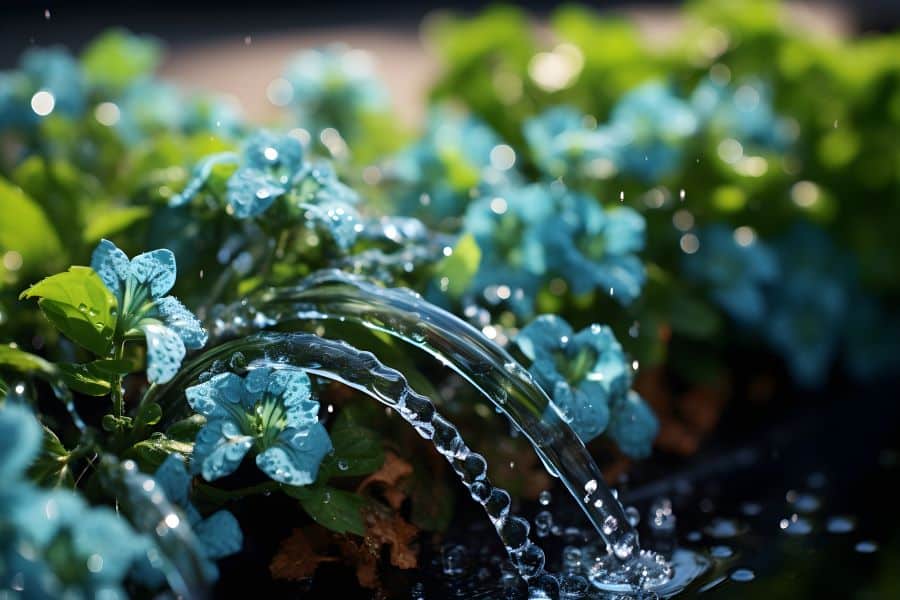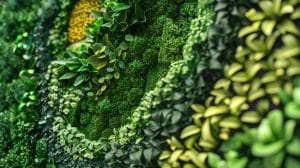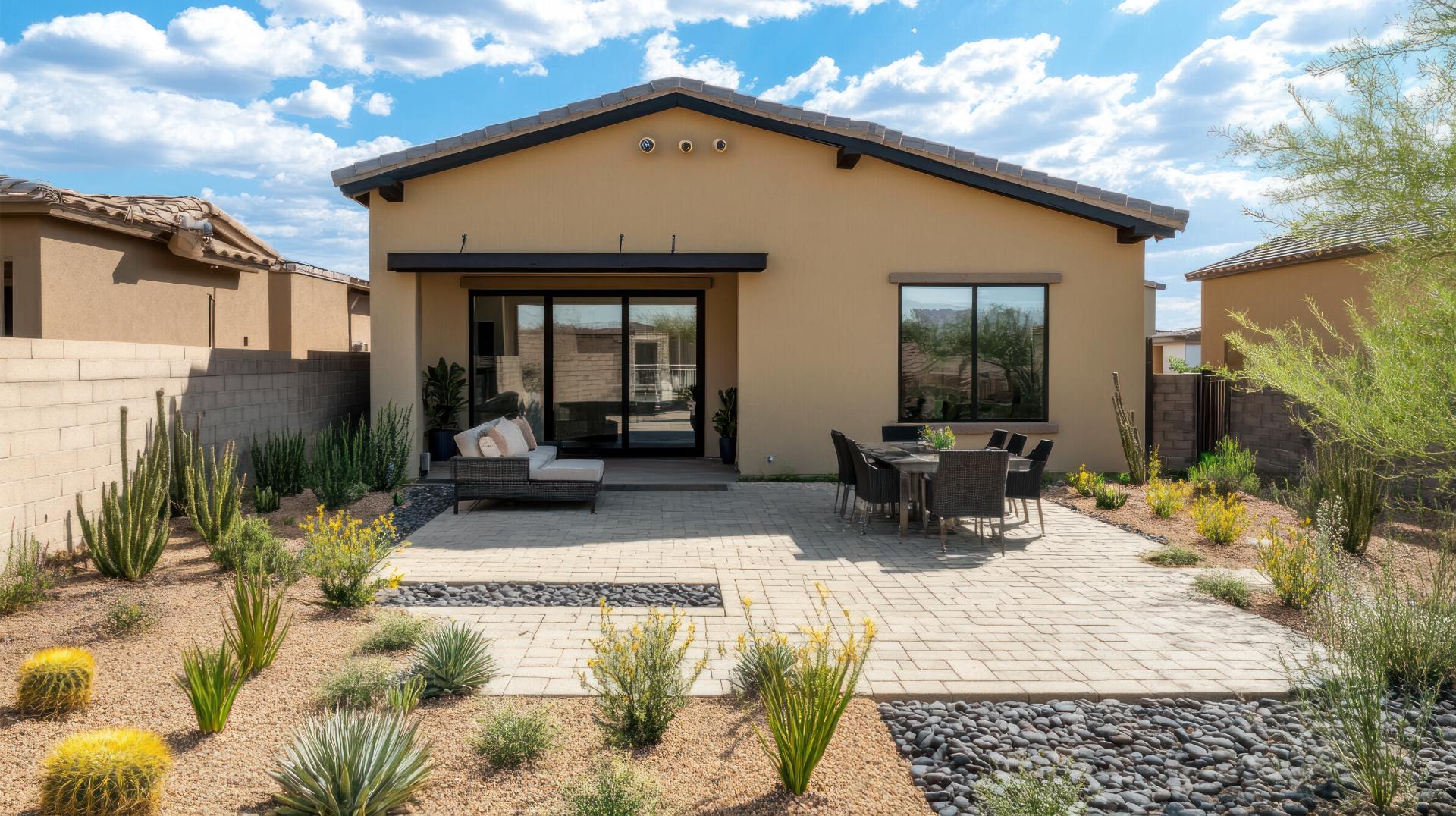Welcome to our latest guide on irrigation methods! Here at Cacti Landscapes, we understand the importance of choosing the right irrigation system for your garden. Two popular choices are drip and flood irrigation systems. Each method offers unique benefits and can significantly impact the health and growth of your plants.
Understanding Flood Irrigation: Basics and Benefits
In this article, we will delve into what flood irrigation is, its types, and its benefits. We’ll also discuss drip irrigation and how it compares to flood irrigation in terms of water efficiency, control, and crop suitability.
Our goal as a Las Vegas landscaping company is to provide you with clear, helpful information so you can make the best decision for your Las Vegas landscape. Whether you’re a seasoned green thumb or just starting, understanding these systems will help you optimize your watering strategy for a lush, thriving garden.
So, let’s break down these irrigation systems, starting with flood irrigation. It’s a common method that has been used in agriculture for centuries, and it involves flooding your garden or farm plot evenly with water, allowing it to soak into the soil. This method can be divided into several types, each suitable for different landscapes and water requirements.
By the end of this guide, you’ll have a clearer picture of how to keep your plants hydrated efficiently and effectively, no matter the size or type of your garden.
What is Flood Irrigation?
Flood irrigation is one of the oldest and most common methods of watering crops and gardens. We use it extensively because it’s straightforward and effective. Essentially, flood irrigation involves spreading water across the soil surface uncontrollably, allowing it to soak downward to reach plant roots. This technique uses gravity to distribute the water across the fields uniformly, making it a passive and energy-efficient irrigation method.
Different Types of Flood Irrigation
We categorize flood irrigation into several types to suit different terrains and crop needs:
- Basin Irrigation: In this system, the land is divided into level sections that are surrounded by dikes. Water is poured into these basins, soaking the soil and nourishing the crops.
- Border Irrigation: Similar to basin irrigation, but the areas are elongated and sloped slightly. Water flows down the slope across the crop area, providing even irrigation.
- Furrow Irrigation: We create furrows between crop rows and fill them with water. The water slowly seeps into the soil and reaches the crop roots.
- Surge Irrigation: This method involves applying water to the field in controlled, intermittent spurts, enhancing the efficiency of water soaking into the soil.
- Contour Irrigation: Particularly useful on sloped fields, this method involves plowing furrows along the contours of the land and filling them with water, reducing water runoff.
Advantages of Flood Irrigation Systems
Flood irrigation systems come with several benefits:
- Saves Time: It covers large areas quickly without the need for sophisticated technology.
- Efficient Water Use: When managed well, it can be quite efficient, especially in level fields with low permeability soil.
- Uniform Plant Growth: This ensures an even distribution of water, promoting consistent crop growth across the field.
- Lower Humidity: Less water is lost to evaporation compared to overhead sprinkling.
- Lower Disease Risk: Fewer wet leaves and plant structures reduce the risk of diseases.
- Increased Space Efficiency: Allows the entire surface area to be utilized for crop growth without additional infrastructure.
What is Drip Irrigation?
Moving from traditional methods to a more controlled irrigation system, drip irrigation utilizes a network of pipes and drip nozzles to deliver water directly to the soil near the plants’ roots. This system is highly efficient as it reduces the loss of water through evaporation or runoff.
Advantages of Drip Irrigation Systems
Drip irrigation is celebrated for several compelling reasons:
- Fewer Pests: This reduces the incidence of pests since the foliage remains dry, lessening their attraction.
- Discourages Weeds: Targets water directly to the plant roots, limiting weed growth by depriving them of water.
- Saves Time: Once installed, maintaining and operating a drip system takes less time than many traditional methods.
- Better Plant Health: Direct watering to roots ensures optimal plant growth and health by preventing over- or under-watering scenarios.
Both flood and drip irrigation have their specific advantages and scenarios where they shine. Understanding each system deeply helps us apply the right strategy to keep our gardens and crops flourishing year-round.
Comparing Drip and Flood Irrigation: Which is Better for Your Landscape?
Water Efficiency
When deciding between drip and flood irrigation, water efficiency is a crucial factor we consider. Drip irrigation is highly efficient, targeting water directly to the plant’s root zone, which minimizes evaporation and runoff. This method can save a significant amount of water, making it ideal for areas with water scarcity issues or for gardeners who want to practice sustainable landscaping in Henderson.
On the other hand, flood irrigation can also be water-efficient, especially when managed properly with level fields and compact soils, but generally, it tends to use more water due to surface runoff and evaporation.
Precision and Control
Precision and control over watering are vital for the health of your plants. Drip irrigation offers excellent control by allowing water to drip slowly to the roots of each plant. This precision prevents water waste, reduces weed growth around the plants, and offers the flexibility to adjust the water amount based on each plant’s needs.
In contrast, flood irrigation repair involves releasing water over the soil surface and allowing it to spread across the field. This method offers less control over the distribution and the amount of water each plant receives, which can lead to inconsistencies in plant growth.
Suitability for Different Crops
Different crops have different watering needs, and choosing the right irrigation system can influence your garden’s yield and health. Flood irrigation is often preferred for larger fields of crops like rice, maize, and alfalfa that can benefit from the higher water levels. It is also beneficial where the leveling of fields can be economically managed.
Drip irrigation, however, is particularly suitable for row crops, vegetable gardens, and orchards where precise amounts of water can significantly affect the crop’s quality and quantity. Drip systems are also better for uneven or sloping terrain where flood irrigation could lead to water pooling and erosion.
Choosing the Right Irrigation Method for Your Needs
Selecting the right irrigation method for your garden or landscape depends on various factors, including water availability, type of crops, soil characteristics, and your specific environmental conditions. By now, you should have a clearer understanding of how drip and flood irrigation systems work, along with their pros and cons.
If you seek precision and conservation, and are planting moisture-sensitive crops, drip irrigation might be your best choice. Conversely, for large-scale, water-abundant environments that need quick and extensive watering, flood irrigation could be more appropriate.
If you’re still undecided or need professional advice tailored to your unique scenery, don’t hesitate to contact our skilled landscaping specialists at Cacti Landscapes. Let’s ensure your landscaping investment yields environmental beauty and sustainability year-round!















